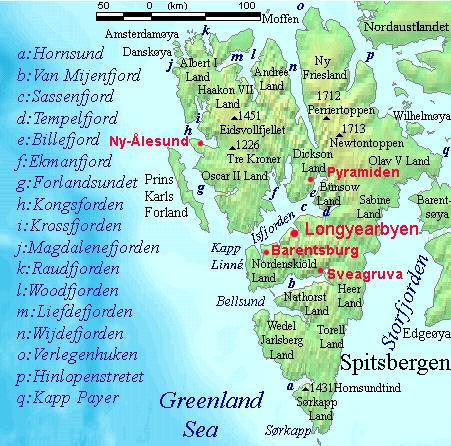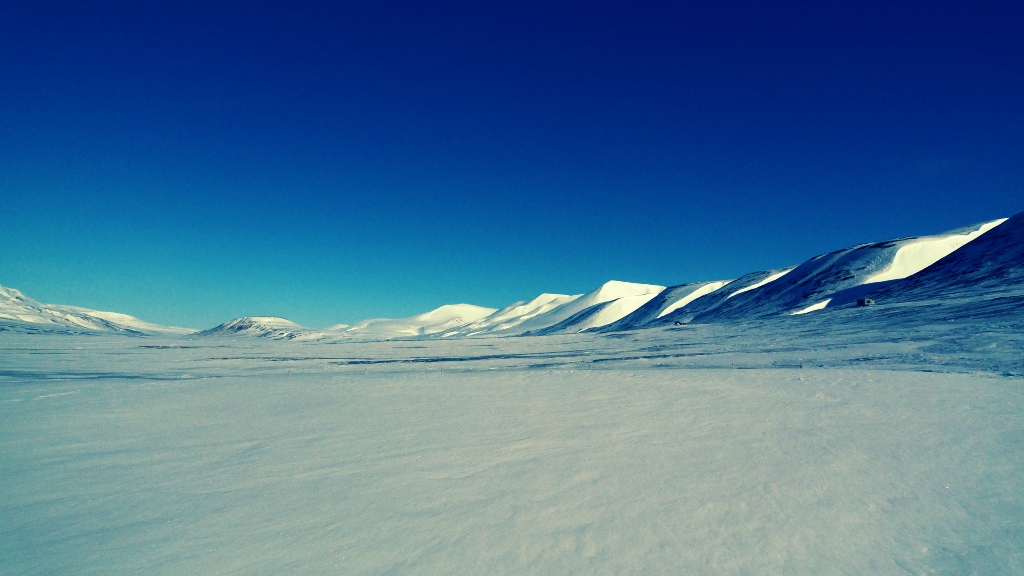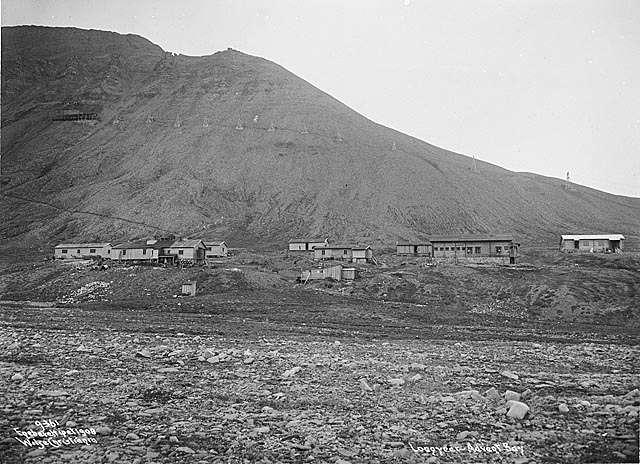|
Adventfjorden Hjorthhamn IMG 2627
Adventfjorden (Advent Bay) is a 7 km long and 4 km wide bay running south-eastwards from the southern side of Isfjorden, on the west coast of Spitsbergen in Svalbard. The name represents a corruption of ''Adventure Bay'' - probably named after the Hull-built whaleship ''Adventure'', which operated in Isfjorden in 1656. The fjord was originally known as ''Klass Billen Bay''. At the head of Adventfjorden is Adventdalen (Advent Valley). The former mining-camp of Longyearbyen (now Svalbard's main town) lies on the fjord's southwestern shore, while another former mining-camp, Hiorthhamn Hiorthhamn is an abandoned settlement located on the east side of Adventfjorden on the island of Spitsbergen in Svalbard, Norway. It served as a coal mining camp from 1917 to 1921 operated by De Norske Kullfelter Spitsbergen. The settlement w ..., is located on its northeastern shore. References *Conway, W. M. 1906. No Man's Land: A History of Spitsbergen from Its Discovery in 159 ... [...More Info...] [...Related Items...] OR: [Wikipedia] [Google] [Baidu] |
Spitsbergen Labelled
Spitsbergen (; formerly known as West Spitsbergen; Norwegian: ''Vest Spitsbergen'' or ''Vestspitsbergen'' , also sometimes spelled Spitzbergen) is the largest and the only permanently populated island of the Svalbard archipelago in northern Norway. Constituting the westernmost bulk of the archipelago, it borders the Arctic Ocean, the Norwegian Sea, and the Greenland Sea. Spitsbergen covers an area of , making it the largest island in Norway and the 36th-largest in the world. The administrative centre is Longyearbyen. Other settlements, in addition to research outposts, are the Russian mining community of Barentsburg, the research community of Ny-Ålesund, and the mining outpost of Sveagruva. Spitsbergen was covered in of ice in 1999, which was approximately 58.5% of the island's total area. The island was first used as a whaling base in the 17th and 18th centuries, after which it was abandoned. Coal mining started at the end of the 19th century, and several permanent comm ... [...More Info...] [...Related Items...] OR: [Wikipedia] [Google] [Baidu] |
Isfjord (Svalbard)
Isfjorden is the second longest fjord in the Norwegian archipelago of Svalbard. It lies on the west side of Spitsbergen, an island in the Arctic Ocean about midway between Norway and the North Pole, and the largest in the archipelago. The mountain of Alkhornet stands on the northern side of the entrance to the fjord, as does the coastal plain of Daudmannsøyra. A portion of Isfjorden is included in the national parks of Norway as Nordre Isfjorden Land National Park. Around the fjord lie many of the largest settlements in Svalbard: Barentsburg, Longyearbyen (on the Adventfjorden) and Pyramiden. History A Basque whaling ship from San Sebastian, under the command of Juan de Erauso and piloted by the Englishman Nicholas Woodcock, was the first to establish a temporary whaling station here in 1612. In 1613 French, Basque, and Dutch whaling ships resorted to Safehaven (Trygghamna) on the north side of Isford or in Green Harbour on the south side of the fjord. All were either d ... [...More Info...] [...Related Items...] OR: [Wikipedia] [Google] [Baidu] |
Spitsbergen
Spitsbergen (; formerly known as West Spitsbergen; Norwegian: ''Vest Spitsbergen'' or ''Vestspitsbergen'' , also sometimes spelled Spitzbergen) is the largest and the only permanently populated island of the Svalbard archipelago in northern Norway. Constituting the westernmost bulk of the archipelago, it borders the Arctic Ocean, the Norwegian Sea, and the Greenland Sea. Spitsbergen covers an area of , making it the largest island in Norway and the 36th-largest in the world. The administrative centre is Longyearbyen. Other settlements, in addition to research outposts, are the Russian mining community of Barentsburg, the research community of Ny-Ålesund, and the mining outpost of Sveagruva. Spitsbergen was covered in of ice in 1999, which was approximately 58.5% of the island's total area. The island was first used as a whaling base in the 17th and 18th centuries, after which it was abandoned. Coal mining started at the end of the 19th century, and several permanent commun ... [...More Info...] [...Related Items...] OR: [Wikipedia] [Google] [Baidu] |
Svalbard
Svalbard ( , ), also known as Spitsbergen, or Spitzbergen, is a Norwegian archipelago in the Arctic Ocean. North of mainland Europe, it is about midway between the northern coast of Norway and the North Pole. The islands of the group range from 74° to 81° north latitude, and from 10° to 35° east longitude. The largest island is Spitsbergen, followed by Nordaustlandet and . The largest settlement is Longyearbyen. The islands were first used as a base by the whalers who sailed far north in the 17th and 18th centuries, after which they were abandoned. Coal mining started at the beginning of the 20th century, and several permanent communities were established. The Svalbard Treaty of 1920 recognizes Norwegian sovereignty, and the 1925 Svalbard Act made Svalbard a full part of the Kingdom of Norway. They also established Svalbard as a free economic zone and a demilitarized zone. The Norwegian Store Norske and the Russian remain the only mining companies in place. Res ... [...More Info...] [...Related Items...] OR: [Wikipedia] [Google] [Baidu] |
Kingston Upon Hull
Kingston upon Hull, usually abbreviated to Hull, is a port city and unitary authority in the East Riding of Yorkshire, England. It lies upon the River Hull at its confluence with the Humber Estuary, inland from the North Sea and south-east of York, the historic county town. With a population of (), it is the fourth-largest city in the Yorkshire and the Humber region after Leeds, Sheffield and Bradford. The town of Wyke on Hull was founded late in the 12th century by the monks of Meaux Abbey as a port from which to export their wool. Renamed ''Kings-town upon Hull'' in 1299, Hull had been a market town, military supply port, trading centre, fishing and whaling centre and industrial metropolis. Hull was an early theatre of battle in the English Civil Wars. Its 18th-century Member of Parliament, William Wilberforce, took a prominent part in the abolition of the slave trade in Britain. More than 95% of the city was damaged or destroyed in the blitz and suffered a perio ... [...More Info...] [...Related Items...] OR: [Wikipedia] [Google] [Baidu] |
Whaleship
A whaler or whaling ship is a specialized vessel, designed or adapted for whaling: the catching or processing of whales. Terminology The term ''whaler'' is mostly historic. A handful of nations continue with industrial whaling, and one, Japan, still dedicates a single factory ship for the industry. The vessels used by aboriginal whaling communities are much smaller and are used for various purposes over the course of the year. The ''whale catcher'' was developed during the age of steam, and then driven by diesel engines throughout much of the twentieth century. It was designed with a harpoon gun mounted at its bow and was fast enough to chase and catch rorquals such as the fin whale. At first, whale catchers either brought the whales they killed to a whaling station, a settlement ashore where the carcasses could be processed, or to its factory ship anchored in a sheltered bay or inlet. With the later development of the slipway at the ship's stern, whale catchers were able to ... [...More Info...] [...Related Items...] OR: [Wikipedia] [Google] [Baidu] |
Adventdalen
Adventdalen ( en, Advent Valley)Kruse, Frigga. 2013. ''Frozen Assets: British Mining, Exploration, and Geopolitics on Spitsbergen, 1904–53''. Groningen: University of Groningen, p. 207. is a valley that is the broader term for Adventdalselva (''Advent Valley River'') on the island Spitsbergen in Svalbard, Norway. The valley and the river flow into Adventfjorden and further into Isfjorden. The end of the valley is at Haugen in Longyearbyen, close to the University Centre in Svalbard. The valley originates from the mountains Slottet and Tronfjellet, under the glaciers Hellefonna and Drønbreen. It runs westwards towards the fjord. From northwest, the branch valleys are: Mälardalen, Helvetiadalen, Eskerdalen, Janssondalen, Foxdalen, Bolterdalen, Todalen Todalen is a village on the north shore of the Vinjefjorden in Aure Municipality in Møre og Romsdal county, Norway. It is located about south of the municipal center of Aure. Until the beginning of the 19th century ... [...More Info...] [...Related Items...] OR: [Wikipedia] [Google] [Baidu] |
Longyearbyen
Longyearbyen (, locally �lɔ̀ŋjɑrˌbyːən "The Longyear Town") is the world's northernmost settlement with a population greater than 1,000 and the largest inhabited area of Svalbard, Norway. It stretches along the foot of the left bank of the Longyear Valley and on the shore of Adventfjorden, the short estuary leading into Isfjorden on the west coast of Spitsbergen, the island's broadest inlet. As of 2002 Longyearbyen Community Council became an official Norwegian municipality. It is the seat of the Governor of Svalbard. The town's mayor is Arild Olsen. Known as Longyear City until 1926, the town was established by and named after American John Munro Longyear, whose Arctic Coal Company started coal-mining there in 1906. Store Norske Spitsbergen Kulkompani (SNSK) took over the mining operations in 1916, and still conducts mining. The German ''Kriegsmarine'' almost completely destroyed the town on 8 September 1943, but rebuilding took place after the Second World Wa ... [...More Info...] [...Related Items...] OR: [Wikipedia] [Google] [Baidu] |
Hiorthhamn
Hiorthhamn is an abandoned settlement located on the east side of Adventfjorden on the island of Spitsbergen in Svalbard, Norway. It served as a coal mining camp from 1917 to 1921 operated by De Norske Kullfelter Spitsbergen. The settlement was named for the company's director, Fredrik Hiorth (1851–1923). Muskox were introduced in the area from Greenland Greenland ( kl, Kalaallit Nunaat, ; da, Grønland, ) is an island country in North America that is part of the Kingdom of Denmark. It is located between the Arctic and Atlantic oceans, east of the Canadian Arctic Archipelago. Greenland is t ... in 1929, and the camp took the name Moskushamn in 1938. It reverted to its original name in 2002. References Former populated places in Svalbard 1917 establishments in Norway Spitsbergen {{Spitsbergen-geo-stub ... [...More Info...] [...Related Items...] OR: [Wikipedia] [Google] [Baidu] |
Norwegian Polar Institute
The Norwegian Polar Institute (NPI; no, Norsk Polarinstitutt) is Norway's central governmental institution for scientific research, mapping and environmental monitoring in the Arctic and the Antarctic. The NPI is a directorate under Norway's Ministry of Climate and Environment. The institute advises Norwegian authorities on matters concerning polar environmental management and is the official environmental management body for Norwegian activities in Antarctica. Activities The institute's activities are focused on environmental research and management in the polar regions. The NPI's researchers investigate biodiversity, climate and environmental toxins in the Arctic and Antarctic, and in this context the institute equips and organizes large-scale expeditions to both polar regions. The institute contributes to national and international climate work, and is an active contact point for the international scientific community. The institute collects and analyses data on the environm ... [...More Info...] [...Related Items...] OR: [Wikipedia] [Google] [Baidu] |
Bays Of Spitsbergen
A bay is a recessed, coastal body of water that directly connects to a larger main body of water, such as an ocean, a lake, or another bay. A large bay is usually called a gulf, sea, sound, or bight. A cove is a small, circular bay with a narrow entrance. A fjord is an elongated bay formed by glacial action. A bay can be the estuary of a river, such as the Chesapeake Bay, an estuary of the Susquehanna River. Bays may also be nested within each other; for example, James Bay is an arm of Hudson Bay in northeastern Canada. Some large bays, such as the Bay of Bengal and Hudson Bay, have varied marine geology. The land surrounding a bay often reduces the strength of winds and blocks waves. Bays may have as wide a variety of shoreline characteristics as other shorelines. In some cases, bays have beaches, which "are usually characterized by a steep upper foreshore with a broad, flat fronting terrace".Maurice Schwartz, ''Encyclopedia of Coastal Science'' (2006), p. 129. Bays were sig ... [...More Info...] [...Related Items...] OR: [Wikipedia] [Google] [Baidu] |










